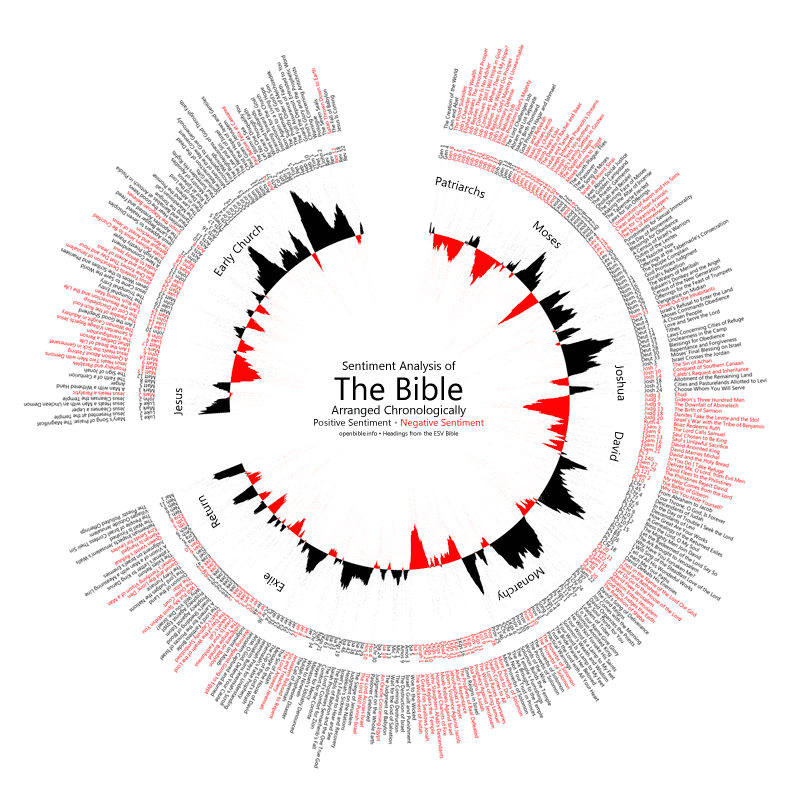This is quite an interesting way to chart the progression of the Biblical narrative. A “sentiment analysis” from OpenBible.

Here’s the methodology applied to produce these graphics.
“Sentiment analysis involves algorithmically determining if a piece of text is positive (“I like cheese”) or negative (“I hate cheese”). Think of it as Kurt Vonnegut’s story shapes backed by quantitative data.
I ran the Viralheat Sentiment API over several Bible translations to produce a composite sentiment average for each verse. Strictly speaking, the Viralheat API only returns a probability that the given text is positive or negative, not the intensity of the sentiment. For this purpose, however, probability works as a decent proxy for intensity.”
From a cursory analysis the modelling adds up to most understandings of Biblical theology – except perhaps that exile isn’t as confronting emotionally, or as dire and depressing, as we might have thought – probably because most exilic texts include expressions of hope for delivery.
Here’s the sentiment analysed on a book by book basis.

Comments
It’s hard to know what this means, if anything!
It’s interesting to consider what difference the different text increments (150 cf 5) make between the two graphics. But then, the whole thing is based on an algorithm — how far does that get us?
While it’s helpful to see the Bible as one narrative, it’s not linear or chronological as the circular graphic presents it (take the poetry for example).
Very interesting. Iw as surprised that Mark was so negative! I’m reading it at the moment and haven’t picked up on the negative stuff. I’ll have to keep my eye out.
Also surprised Isaiah wasn’t more negative.
As Arthur said, its only an algorithm.
I think the site says something about how it works in the gospels – basically it tries to work out the way the people in the story are responding to what’s going on – so it goes of the crowd’s reaction to Jesus, as well as off Jesus’ reactions to the crowd, and the mood of his teaching…